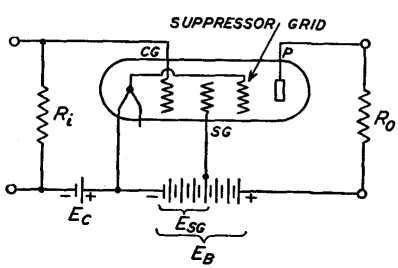| Basic Radio is a free introductory textbook on electronics based on tubes. See the editorial for more information.... |

|

Home  Electronic Devices Electronic Devices  Multi-Electrode Tubes Multi-Electrode Tubes  Pentodes Pentodes |
||||






|
||||
|
PentodesAuthor: J.B. Hoag A pentode contains five electrodes: a filament, a plate, and three grids, as shown in Fig. 15 C.
The plate resistance of various commercial pentodes in normal operation is fairly high, ranging from 22,000 to 2,000,000 ohms. The mutual conductance is high, ranging from 400 to 6,000 micro-mhos, and the amplification constant is also large, ranging from 70 to 1,500. In some of the commercial pentodes the third grid is brought out of the tube socket instead of being connected inside of the tube to the filament or cathode. Many circuit combinations are then possible.
|
||||
Home  Electronic Devices Electronic Devices  Multi-Electrode Tubes Multi-Electrode Tubes  Pentodes Pentodes |
||||
Last Update: 2009-11-01


